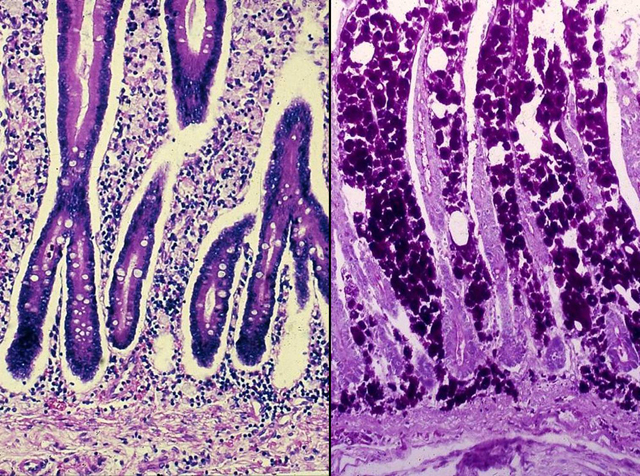Features
Summary
Findings
This left image shows the lower half of the intestinal mucosa. Note that the lamina propria is markedly widened due to the presence of numerous "foamy macrophages". These foamy macrophages contain PAS-positive material (see right image).
Impression
Small intestine, Whipple's disease
Clinical Pathologic Correlation
Whipple's disease is a rare systemic infection caused by Whipple's disease bacilli (Tropherema whippelii) which may involve any organ. The intestine, central nervous system and joints are the organs most typically affected. Clinically, the disease presents itself primarily as a malabsorption syndrome, accompanied by lymphadenopathy, polyarthritis and central nervous system complaints. The disease is treated effectively with antibiotics.
Pathology Pointer
The foamy macrophages of Whipple's disease resemble those of MAI infection. Whipple's disease is an uncommon illness, whereas MAI has become prevalent since the advent of AIDS. The use of special stains and clinical findings can help to distinguish the two. PAS stain reacts with anything that contains a carbohydrate moiety, such as basement membrane material and breakdown products of tissue injury. The Whipple disease bacillus (Tropherema whippelii) also stains positively with PAS. However, for definitive identification, electron microscopy and molecular biologic studies are required.
Preparation
Fixed, H & E stain; PAS stain
Specimen
Small intestine
Image Credit
Katsumi M. Miyai, M.D., Ph.DDepartment of Pathology
School of Medicine
University of California, San Diego

